The Balanced Life
The Key To Keeping Your Balance Is Knowing When You Lost It
The balanced life is one where you recognise the full spectrum of possible responses and consistently choose the right one.
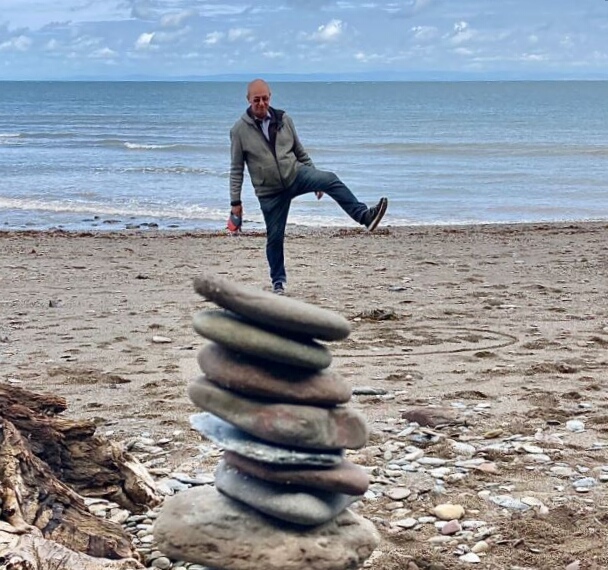
Introducing The Balanced Life
Most articles on how to achieve and maintain the balanced life focus on things like eating properly and exercising regularly, keeping your mind in shape, spending quality time with your family and friends, and taking time out for yourself.
This is all good stuff but rather misses the point in my view.
An example:
Earlier in my career I was involved in trouble-shooting major IT programmes that were not performing, or going "off the rails", and I frequently found myself in positions of leadership in difficult circumstances.
I very quickly discovered the importance of what is referred as the "Leadership Spectrum".
At one of this spectrum is a leadership style that is 100% task oriented - we could call this "Command and Control" - which means I give the orders and say jump - and you say: "Yes Sir, how high?"
The other end of the spectrum is 100% focused on affiliation - we could call this "Consensus" - which is about inclusion and collaboration and paying attention to the other party's feelings and opinions - which means I ask: "How do you feel about that, what is your view?"
The following video explains and illustrates this point very well in a military context:
What I also discovered was the need to be able to switch between these opposite positions and to adopt any position along the spectrum that was appropriate to the immediate situation I was dealing with, and to be able to change leadership style within that situation as required, for example, start tough and close with a more consensual style.
The key was flexibility, and this was only possible by mastering the full spectrum of leadership skills that could be required.
Applying this to the balanced life
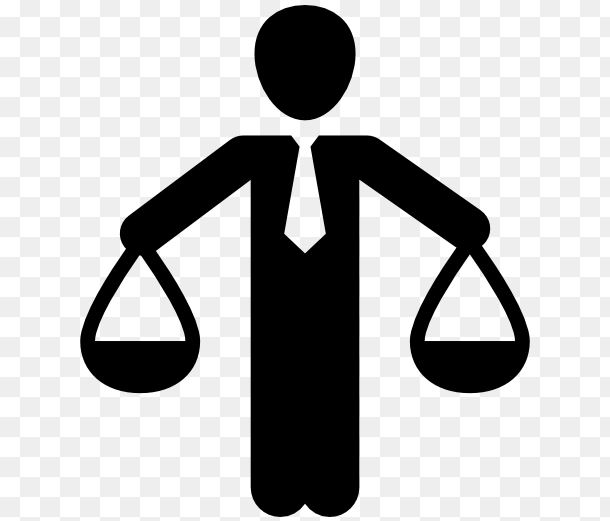
In The Balanced Toolkit we noted that the core theme of this site is to show you how to cope in tough times, and to provide you with the tools to do this successfully.
We also noted that the balance aspect
of this toolkit is achieved by taking a holistic approach.
The balanced life is one where you recognise the full spectrum of possible responses and have develop sufficient experience, insight and self-awareness to navigate yourself to the most appropriate position on that spectrum for the specific circumstances that you are experiencing.
In this article we are going to offer pointers as what this means in practice and how to achieve it.
5 key areas to master for the balanced life
In my experience these are five of the key areas where the balanced life is maintained or lost:
- The Outer Life - The Inner Life
- Thinking - Not Thinking
- Things You Can Control - Things You Can Not Control
- Order - Disorder
- The Present Moment - The Long Game
Overview This is a big one and it is the longest section in this article! What we are considering here is how we achieve a balance between being stuck in our heads and living in our thoughts, and developing the ability to stop thinking and observe the consciousness that begins to arise - or more accurately that we start to become aware of - in the gaps between our thoughts. Then we move on to consider how we can access and engage with this consciousness. I make no apology for the number of
internal links in this section. To gain a holistic view, and achieve the
balanced life, we need to have as full an awareness as possible of the many component parts
that constitute the holistic view, and the balance between the outer life and the inner life is the foundation upon which it all rests. Let's start with the outer life - the domain of the conscious thinking mind. The conscious mind as work station The conscious mind is important and we can think of it as the work station where we: Seeing is believing, or is it? For the conscious mind, seeing is believing where, like the characters in "The Matrix", we are fooled by appearances and buy into the illusion that what we see is reality. The reason for this is that the automatic default setting of the
conscious mind is to see things as separate, "out there", as discrete
packages of situations and events defined by time, with a past and a
future. How you filter what you see The conscious mind can also see the present moment, but it does so through the filtering of its own inner map
of reality which automatically and seamlessly places things into the
context of a remembered past from which it creates and projects a
future. As a result of this automatic process we are fooled by our thoughts, we are trapped in our thoughts, and we can’t think our way out of them with our conscious mind. The problem of limited bandwidth There is also an additional problem, and this is a problem of hard wiring and bandwidth. The conscious mind has a serious limitation. It is a scanning system
that scans in a linear fashion focusing on one thing at a time, sequentially.
Unfortunately, the real world doesn’t happen one thing at a time, one thing after
another. The real world is multidimensional, with a lot happening all at
once, and it comes at us so fast and in such a way that we
could never scan it in the narrow focused linear way that we are hard wired to think.
This is where the filtering mechanism kicks in, based on our
inner map of reality, and further restricts and selectively limits our
perception of reality.
The Balanced Life: The Outer Life and The Inner Life

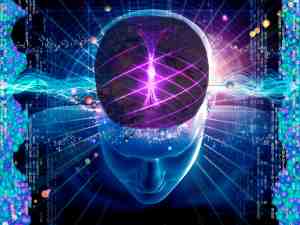
Now we consider the inner life.
Here's where it all gets interesting and impossible for the workstation [conscious mind] to fully comprehend.
Duality in a universe of vibration
We live, quite literally, in a universe of vibration. Whether we think of vibration in terms of waves or particles, no crest of a wave can occur without a trough, and no particle can occur without a space or interval between itself and other particles.
Think of it this way, there can be:
- No on without off
- No up without down
- No hot without cold
- No white without black
- No good without bad
- No life with out death
The 50% of everything - the background - that we don't see
The physical world that we see - and call reality - is the world of the mind and is experienced through our senses. Let's call this the foreground.
But this foreground is only 50% of the equation.
The other 50% is the background – also referred to as emptiness, the void, the field of possibilities, the "ground of all being", God, Allah etc.
Our senses are constructed in such a way that we notice and respond to the foreground but miss, or overlook, the background .
The background is the realm of energy [or consciousness] from which everything emerges and into which it eventually dissolves.
This is the realm of consciousness; in a neutral and non-religious sense this is the realm of the spiritual, or another way of looking at it is as the realm of energy.
It is from this background that all form emerges into the foreground, and into which it eventually dissolves.
The physical world of form - that we see as "reality" - could not exist without this background.
To be philosophical for a moment, this is summed up in the Buddhist saying:
"Form is nothingness, and nothingness is form."
And also in the saying of Christian theologians (Tillich et al)
"The ground of all being."
So if we cannot see this background with our conscious mind how do we access it?
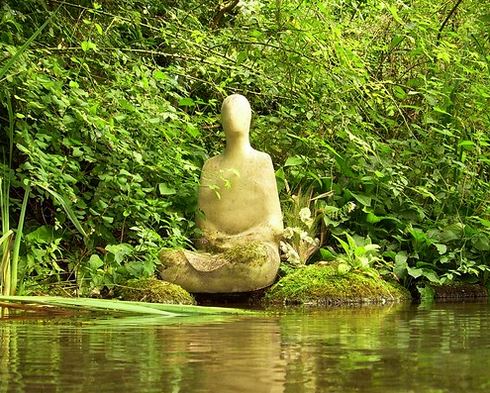
The answer is that we use our conscious mind to engage in a meditation practice, or any other reflective practice, that quietens the thinking mind.
This enables us to go through a "mental gear change" so that we become entirely focused on the present moment and observe our thoughts - rather like watching clouds move across the sky - but without engaging with them.
This is often referred to as a mindfulness practice or the practice of present moment awareness.
As we become more mindful, we experience - in the gaps between our thoughts - that we are far
more than our limited conscious sense of our self. Put simply, our
consciousness expands.
Aside from the conscious decision to practice mindfulness the key to engaging with consciousness is not through the conscious mind, it does not involve our ego.
It all starts with some form of inner prompting. This is felt in your heart not your head.
My personal experience of getting started

I have written in some detail about my personal entry point to all this, when I really started to take consciousness seriously in:
What Does It Mean To Take The Red Pill?
"The journey of personal development and spiritual growth starts by developing a good working relationship with your mind. The
initial stages of this process focus on the conscious mind and working
on all the things you can do to develop a more resourceful mind.
As
you engage with this process you soon realise that your mind has many
unconscious aspects that you need to make conscious and work on. Then, at some point, you become aware of your spiritual or higher self.
The best way to think of this is as your personal portal to the universe and "everything out there".
Taking the red pill describes the point at which you seriously start to engage with your higher self..."
Further Reading:
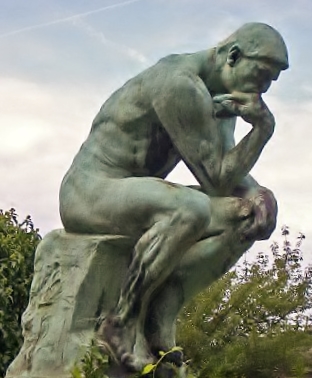
How to think. There is a considerable volume of material on this site on thinking skills.
The balanced life is achieved by mastering both ends of the spectrum of thinking and not thinking.
The focus on this site is on HOW to think and not what to think.
In this article I want to highlight a number of ways of improving your cognitive capabilities and provide you with a range of practical tools and resources to do this successfully - which can be accessed in "How To Think".
Learning and applying these critical thinking skills falls within the domain of the conscious mind and the outer life.
Here are 5 key reference points:
[1] Focusing On How To Think Not What To Think
“People who are more creative can simultaneously engage brain networks that don’t typically work together.”
- They have patience and persistence and allow the time
- They are largely self-taught
- They are good at making juxtapositions between dissimilar subjects
- They are open-minded
- They are so good, we can’t ignore them
[2] Critical Thinking Skills
Critical thinking is just deliberately and systematically processing information so that you can make better decisions and generally understand things better.
[3] The Strategic Mindset
The strategic mindset is focused on the most efficient thinking process to achieve a result.
While others diligently follow the same convoluted path, people with the strategic mindset are constantly looking for a more efficient route forwards.
[4] Metacognition
Thinking about thinking: knowing how to apply the most appropriate cognitive processes to the task in hand.
Effective thinkers have good metacognition, they know how to access these different modes of thinking deliberately and apply them to different kinds of tasks.
[5] Mental Models
A mental model is a high level representation, or overview, of how something works.
Two broad categories of mental models that are particularly useful are those that help us understand how:
[1] The world works and thus to predict the future.
[2] To see connections and opportunities
This site has a wealth of material available on Mental Models.
Further Reading:
How to not think.

The balanced life is a life that can stop thinking on demand.
The most effective route to not thinking is the practice of mindfulness.
There is nothing mysterious or esoteric about this practice. Mindfulness is a natural state that occurs spontaneously when we are unaffected by our thoughts and where we are totally present.
Recommended Reading"Our brains employ two modes of thinking to tackle any large task: focused and diffuse. Both are equally valuable but serve very different purposes. To do your best work, you need to master both." [Shane Parrish]
Focused and Diffuse: Two Modes of Thinking
Further Reading:
- Mindfulness Meditation Technique - The Basics
- Practicing Mindfulness In Daily Life
- Mindfulness Exercises
- Mindful Listening
- Guided Mindfulness Meditation
- Zen Enlightenment - The End Of Delusion?
- Why Do We Think The Way We Do?
- Mindfulness Is A Spontaneous State
- Stuck In Seeking
- How To Develop Awareness
- Freeing Yourself From Your Mind
- My Experience Of Mindfulness In Situations Of Imposed Change
- Tips On Mindfulness Practice
Overview This point is probably one of the most important. We waste so much time and energy in life obsessing over things we have done in the past, or that others have done to us, and worrying about what might happen in the future. Our stress related thoughts are largely about how to cope with what HAS happened and how to deal with what MIGHT happen as a consequence of what has happened.
In Techniques For Stress Management this is discussed in depth and a range of mindfulness and other resources are provided. Here the balanced life is achieved by being very clear about what we can control as opposed to what we can't control, and where that control is exercised. The real control lies in understanding that it is the quality of our response to whatever happens that ultimately, over time, shapes the outcomes that we experience. Focus on things you can control, ignore the rest. The Stoics referred to this as "the dichotomy of control".
Modern psychologists refer to an “internal locus of control” and an “external locus of control.” This means that if you have an internal locus of control you believe that you are
responsible for most of what happens in your life. Whereas if you have an external locus of control you believe that life happens to you and to some extent this can manifest as a victim mentality. The key to this is understanding the one area that you DO have control over which is your response to what happens to you. This has been nicely put in Reinhold Neibuhr’s famous “Prayer of Serenity”: "God, grant
me the serenity to accept the things I cannot change, courage to change
the things I can, and wisdom to know the difference."
The Balanced Life: Things You Can Control and Things You Can Not Control
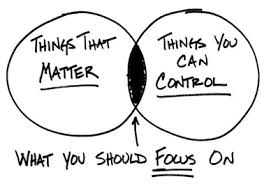
Further Reading:
The Law Of Response and Outcome
Overview This point is challenging, because for many of us we coast along largely living from day-to-day and functioning on autopilot and we cocoon ourselves into thinking that everything is fine and dandy until suddenly it isn't. I am not talking here about the personal tragedies that affect all of us from time to time, I am talking about the global level, systemic events that can, do and will occur and catch us totally unprepared. The balance here is between on the one hand thinking and living an efficient life to maximise our efforts to live our best possible life and on the other hand adopting a range of simple practical strategies and tactics that enable us to be far better prepared to cope with the chaos and disorder that arises from these catastrophic events. But actually it goes further than that, and as will you read below, there is a perspective that says we can actually thrive and prosper from disorder. How much efficiency are you prepared to sacrifice in order to have a level of antifragility built into your life? An ordered life is an efficient life. There are many articles on this site that cover the subject of efficiency. Arguably all of the material on thinking skills, mental models and cognitive biases and distortions are ultimately all about learning how to think efficiently. Here is a summary list of articles that focus specifically on how to lead an efficient and ordered life: However organised and efficient your personal life may be we live in a world of chaos and disorder. We also live in a world that works in cycles. Some cycles are very obvious and observable, such as the changing seasons throughout the year, the cycles of birth, growth and decay that we can see in the natural world and also in human existence. But other cycles are less observable because they take place over longer periods of time measurable in decades, centuries or millenniums. Beyond the predictable cycles are events that occur infrequently, and whilst possible they are highly improbable and difficult to predict but these events can have devastating consequences. These events are known as Black Swans, a phrase that was brought to popular attention by Nassim Nicholas Taleb
the mathematical statistician, former option trader, risk analyst, and
writer, in his book, "The Black Swan: The Impact Of The Highly Improbable".
The Balanced Life: Order and Disorder
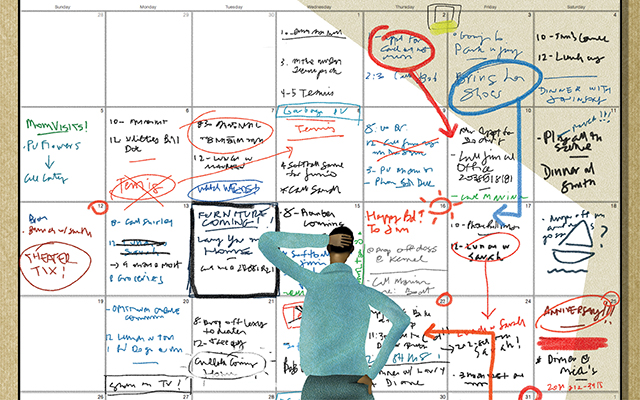

Welcome to the world of disorder!
Some would say that the recent coronavirus pandemic is a black swan event, certainly the 2008 banking crisis caused by the US originated sub-prime mortgage fraud/scandal was a black swan event, the 2001 dot.com bubble was another such event.
So how to prepare for black swan events?
The short answer is by adopting the Boy Scout mentality and "Be Prepared".
Nassim Taleb coined another phrase Antifragile [and wrote another book] to represent things that benefit from
disorder and set out a road map living a life of antifragility.
So what makes something antifragile?
Here are a few of this quality’s key characteristics together with specific guidelines for living antifragile.
Further Reading
The key issue here is how we reconcile the practice of living with a present moment focus with the pursuit of long term goals aka "The Long Game" and the continual focus on some point in the distant future, because every time we engage in visualizing the end goal we cease to be present. This point is very personal to me. I spent great chunks of my earlier adult life looking backwards to the past and dealing with the effects of my upbringing. Then in mid-life I found myself continually focused on the future and the realization of a number of personal and business goals. So how does the balanced life reconcile the focused pursuit of long term goals with a daily present moment awareness? We have already covered mindfulness in some depth above so I am not going to repeat all that here. The pursuit of a long term goal requires a clear and deeply felt point of focus and a clear understanding of what is involved in pursuing the long game.
One of the key points you will see in "The Long Game" article is the importance
and power of habits in the sustained effort that is required over long
periods of time, this theme is developed in The Power of Habits and Atomic Habits. The long game is about sacrificing short-term wins for long-term gains. It describes how you have a significant long term goal and how you repeatedly and consistently take the necessary steps to ensure that you reach your goal. The balanced life solution takes advantage of the brain's hard-wiring. The human brain is hardwired for an "immediate return environment" but in pursuit of a long term goal we are operating in a "delayed return environment". There are 2 keys to the balanced life approach to pursuing long term goals whilst maintaining a present moment focus: [1] Focus On The Process Not The Goal
Shift your focus from the long-term goal to a daily routine of simple steps that will take you to your goal. [2] Measure The Daily Small Steps In The Process
Rapid daily feed-back will provide you with important feedback on your progress in an immediate return environment. This will reward you with a "feel-good" when you get it right, and allow you to take immediate corrective action when you don't.
The Balanced Life: The Present Moment and The Long Game
Overview
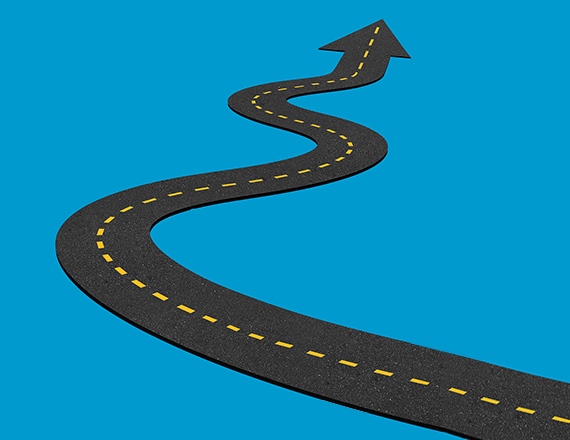
Further Reading

Return to: The Balanced Toolkit
The toolkit is the resources, the information, the tools and techniques contained within this site.
The balance is achieved by adopting a holistic approach.
LATEST ARTICLES
The Battle For Your Mind - How To Win Inner Freedom In A Digital Age Of Distraction
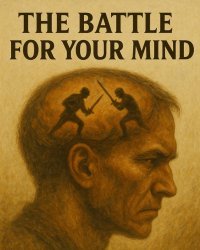 From External Events to Inner Events. We often think of “events” as things that happen out there: the traffic jam, the rude comment, the delayed email reply. But what truly shapes our experience is wh…
From External Events to Inner Events. We often think of “events” as things that happen out there: the traffic jam, the rude comment, the delayed email reply. But what truly shapes our experience is wh…How to See Your Thoughts Without Becoming the Story
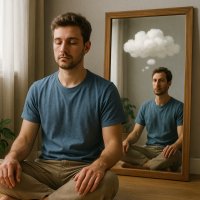 A Practical Guide to Thought-Awareness. You can spend your life inside the stories of your mind without ever learning how to see your thoughts clearly and objectively. Most of the stuff we tell oursel…
A Practical Guide to Thought-Awareness. You can spend your life inside the stories of your mind without ever learning how to see your thoughts clearly and objectively. Most of the stuff we tell oursel…The Collison Decision Matrix - A Simple Framework for Better Choices
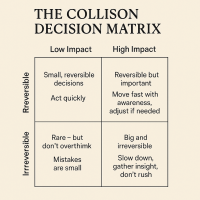 The Collison Decision Matrix Is A Practical Everyday Thinking Tool. Most of us spend a surprising amount of time worrying about decisions. From small ones such as what to wear, what to eat, what to te…
The Collison Decision Matrix Is A Practical Everyday Thinking Tool. Most of us spend a surprising amount of time worrying about decisions. From small ones such as what to wear, what to eat, what to te…The Power Of Asking The Right Question
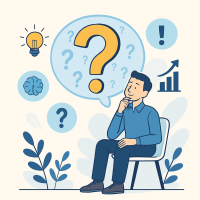 The Power Of Asking The Right Question Lies In The Quest For Insight. To experience the power of asking the right question you must develop the practice of asking questions. The best way to improve th…
The Power Of Asking The Right Question Lies In The Quest For Insight. To experience the power of asking the right question you must develop the practice of asking questions. The best way to improve th…Site Pathways
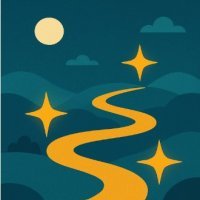 Here is a site pathway to help new readers of Zen-Tools navigate the material on this site. Each pathway is based around one of the many key themes covered on this site and contain a 150 word introduc…
Here is a site pathway to help new readers of Zen-Tools navigate the material on this site. Each pathway is based around one of the many key themes covered on this site and contain a 150 word introduc…How To Live With Contradiction - Beyond Thought Let Stillness Speak
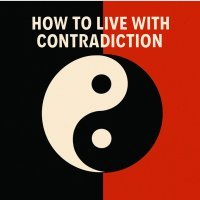 A major impact on so many peoples' lives is the situational contradiction of unfilled realistic expectations. So where does all this leave us? Well here we are, with mental equipment that is more lim…
A major impact on so many peoples' lives is the situational contradiction of unfilled realistic expectations. So where does all this leave us? Well here we are, with mental equipment that is more lim…How To Trust The Process Of Mindfulness - Right Now
 In mindfulness, the process isn’t some distant goal — it's what is happening right now. When we talk about how to trust the process of mindfulness the credibility of the process is heavily dependent…
In mindfulness, the process isn’t some distant goal — it's what is happening right now. When we talk about how to trust the process of mindfulness the credibility of the process is heavily dependent…Inner Mastery For Outer Impact - Mental Clarity For Effective Action
 Insights only matter if they translate into consistent action. In a world crowded with quick fixes and motivational soundbites, the theme “Inner Mastery for Outer Impact” calls us to something more e…
Insights only matter if they translate into consistent action. In a world crowded with quick fixes and motivational soundbites, the theme “Inner Mastery for Outer Impact” calls us to something more e…The Wise Advocate - Helping You Achieve The Very Best Outcome
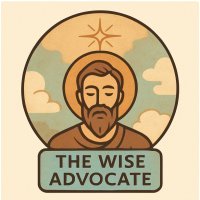 The focus of your attention in critical moments of choice either builds or restricts your capacity for achieving the best outcome. When we talk of 'The Wise Advocate' its easy to think of the consigl…
The focus of your attention in critical moments of choice either builds or restricts your capacity for achieving the best outcome. When we talk of 'The Wise Advocate' its easy to think of the consigl…Trust The Process - Beyond The Cliche
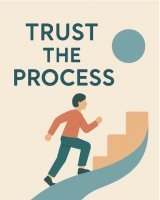 The phrase "trust the process" has become a cliche, the woo-woo mantra of the "self help" industry. Those three little words feel like they ought to mean something useful but hidden behind them are a…
The phrase "trust the process" has become a cliche, the woo-woo mantra of the "self help" industry. Those three little words feel like they ought to mean something useful but hidden behind them are a…The Dopamine Delusion - Why Anticipation Beats Achievement
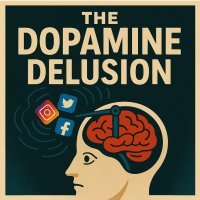 The thrill we feel is not in the having, but in the wanting. The more we have, the more we want. The more things we acquire and the easier things get for us, the more discontent we feel. The more spo…
The thrill we feel is not in the having, but in the wanting. The more we have, the more we want. The more things we acquire and the easier things get for us, the more discontent we feel. The more spo…The Power Of Silence Is Experienced In Your Use Of Language
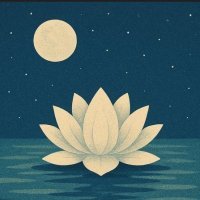 Practise the "Beneficial Neurological Delay" for optimal comprehension. The power of silence is experienced in your use of language, specifically: - How you formulate the words you use to think and in…
Practise the "Beneficial Neurological Delay" for optimal comprehension. The power of silence is experienced in your use of language, specifically: - How you formulate the words you use to think and in…



